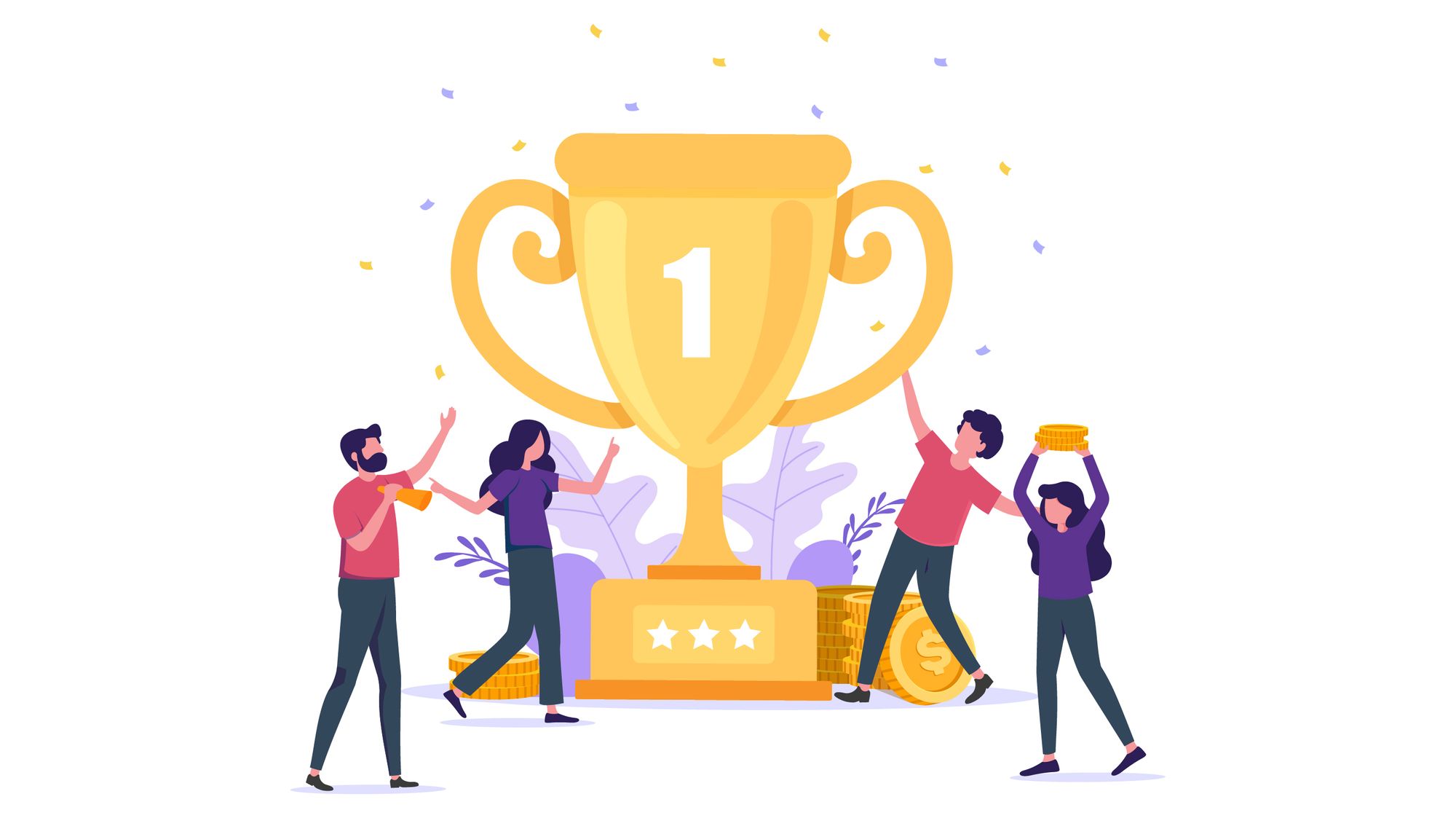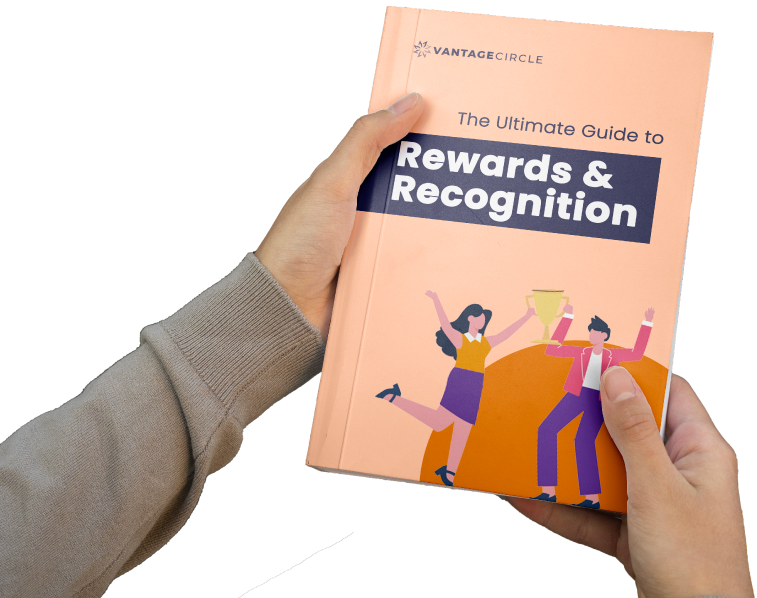Why Recognition Programs Need to Evolve with Changing Employee Expectations in 2025

A Global Employee Recognition and Wellness Platform
We’re amidst rapid transformation, and employee recognition is no exception. The pandemic-induced shift in employees’ interest toward remote and hybrid models has fueled their expectations. This has made meaningful recognition more significant than ever for retaining a thriving workforce.
This workplace revolution compels us to rethink how we appreciate and motivate our employees. With flexible and hybrid models becoming a standard and multiple generations collaborating with diverse teams, traditional recognition programs are struggling to keep pace.
They simply aren’t equipped to meet the unique challenges and varied expectations of today’s employees.
We're competing for top talent in a market where only 21% of employees globally genuinely feel engaged at work.
Taking all this into consideration, our mission is more than clear: Recognition programs need to evolve with the changing times.
As the saying goes, “Change is the only constant”. Adapting to changing times is the only way to stay relevant and successful in this competitive sphere.
Why is this evolution of recognition programs critical, and how can we shape a future-ready culture of appreciation?
The Great Disconnection: Why Traditional Employee Recognition is Failing

According to the Gallup report, in 2024, the Global Employee Engagement Rate was 21%
Data from the Gallup Workplace report reveals that in 2024, Global employee engagement fell, costing the world economy US$438 billion in lost productivity
The figures reveal the blatant truth about how the dropping engagement rates stem from the growing disconnect between employees and their organizations. This suggests that the traditional employee recognition approach is insufficient to bridge the connection.
From Annual Bonuses to Daily Invisibility: The Modern Engagement Crisis
Traditional recognition programs primarily emphasize annual bonuses, tenure-based rewards, and performance reviews.
These methods do not sync well with the demands of today’s workforce, leaving employees feeling invisible despite the best intentions in place.
Limitations of Legacy Systems:
- Overemphasis on Tenure and Extrinsic Rewards: Rewarding employees solely based on their years of service and through periodic bonuses may have worked in the past, but not any longer. They fail to tap the motivational drive in today’s employees and make them feel unappreciated.
Research says that 66% of employees say they would leave their job if they didn't feel appreciated.
-
Lack of Real-Time, Meaningful Feedback: Recognition just once a year kills the drive that encourages them to willingly contribute in the first place. The "set-it-and-forget-it" approach no longer resonates with the employees.
Hence, study reveals that 39% of surveyed employees say they aren’t recognized enough at work. -
Insufficient Alignment with Individual Motivators and Values: Recognizing employees for the same reason every time doesn’t create a sense of personal value. The lack of aligning recognition with individual values is distancing employees from making genuine contributions.
In addition, the traditional system makes remote workers feel more left out, where research shows that 82% remote workers feel unrecognized by their employers.
The Evolving Expectations of Employees and the Changing Workplace Landscape in 2025
It is evident that with the changing workplace landscape, employee expectations will inevitably evolve.
How Generational Shifts Redefined Recognition

Managing a multigenerational workforce requires you to break from the shackles of “one-size-fits-all recognition”, as it can be counterproductive.
Each generation comes with distinct recognition preferences, and understanding these differences is crucial to sustaining engagement.
Baby Boomers: They value tangible rewards such as bonuses, awards, and formal recognition. This generation appreciates structured and company-wide acknowledgments that perfectly align with their long-term career goals.
Generation X: This generation appreciates a blend of tangible rewards and recognition that acknowledges their experience and loyalty. They value flexibility in how recognition is delivered and have a knack for personal feedback.
Millennials: For this generation, purpose is paramount. They seek recognition that reflects their values and contribution, with a strong preference for peer-to-peer acknowledgment on digital platforms.
Gen Z: The youngest generation expects real-time recognition that is more authentic and immediate. They are comfortable with social acknowledgment and value experience-based rewards, prioritizing work-life balance and well-being.
For them, flexibility and personal connection are non-negotiable.
Beyond Generations: Universal Demands for a Better Workplace
While generational preferences matter, certain expectations transcend age groups and are universal to all.
Flexibility, Autonomy, and Work-Life Integration: Employees across generations expect flexibility and autonomy to work in ways that best fit their lifestyle, without compromising recognition.
Mental Health and Purpose: Today’s employees prioritize mental health support and purpose-driven work. Recognition should reflect this shift, demonstrating that companies care about their well-being beyond performance.
Rise of Remote and Hybrid Work Models: As hybrid and remote arrangements become the norm, recognition must transition to digital platforms. This ensures all employees feel equally valued, regardless of their location.
Rethinking Rewards: The Move from Extrinsic to Intrinsic Motivation
Recognition is more than external rewards; it is about making recognition more meaningful by fostering intrinsic motivation.
Beyond Tangible Rewards: Intrinsic Motivation Matters
Bonuses and gifts have their respective places, but employees today seek more than material rewards. They want recognition to add purpose and meaning to their work. You can ensure this by aligning recognition with core values.
Whether they demonstrate their commitment to innovation or leadership in challenging times, intrinsic motivation ignites from being part of something bigger than a paycheck.
The Balance Between Intrinsic and Extrinsic
As leaders, our goal should be to craft a recognition strategy that thoughtfully balances both intrinsic and extrinsic rewards.
While you can appreciate employees with tangible rewards, you can elevate your approach by going beyond material compensation, such as offering growth opportunities, providing regular meaningful feedback, and celebrating achievements that align with company values.
This powerful combination reinforces purpose in employees and drives sustained engagement.
The Blueprint for a Modern Recognition Program

While upgrading technology is essential for modern recognition programs, you should prioritize delivering genuine value to your employees.
Pillar 1: Personalization and Inclusivity
Recognition should reflect the diversity of the workforce. This requires you to create programs that are accessible to all regardless of their background, location, or work style.
Adopting a personalized and inclusive approach enables you to meet the diverse needs of your employees.
Here’s what you need to know:
-
Technology-Enabled, Inclusive Recognition:
Technology plays a central role in ensuring inclusivity in recognition. Digital platforms like Vantage Recognition and Rewards guarantee seamless, real-time recognition across time zones and locations.
Peer-to-peer recognition, manager feedback, and company-wide shout-outs, facilitated by such platforms, ensure that every employee feels seen and valued.

Source: Vantage Recognition
-
Culturally Relevant Recognition:
Managing a global team exposes you to diverse cultural norms and values. To keep them satisfied with recognition, personalization is the key.
Offering personalized recognition by considering an employee’s background and preferences fosters inclusivity and loyalty.
Pillar 2: Flexibility in Delivery
-
Leveraging Digital Platforms for Asynchronous Recognition:
Not every employee works in uniform locations and hours. Hence, recognizing employees across varied time zones requires adopting flexibility.
Digital tools ensure this flexibility, allowing for asynchronous recognition and eliminating the need for physical presence or specific timing.
-
Customizable Rewards and Micro-Experiences:
There is a growing trend toward customized rewards, from flexible working hours to personalized gifts, allowing employees to choose what resonates most with them.
Also known as “micro-experiences”, these cater to personal preferences that range from a wellness day off to a tech gadget, giving employees control over their rewards.
The key is offering choices. When employees choose rewards that align with their values and preferences, recognition becomes more meaningful and impactful.
The Strategic Impact of Evolved Recognition
There’s more to an evolved recognition program than being a feel-good initiative. It has been driving measurable business outcomes.
1. Boosting Business Outcomes: Retention, Productivity, and Morale
-
A Gallup research found that well-recognized employees are 45% less likely to change organizations after two years. Recognition adds a much-needed value to an employee’s work, which fuels their loyalty towards the organization.
-
Hence, building an adaptable “recognition-rich culture” by weaving recognition into the regular work routine can engage employees and make them commit to the organization. A study, in fact, reveals that the top 20% of companies with a “recognition-rich culture”, have a 31% lower voluntary turnover rate.
-
According to Deloitte research, employee engagement, productivity, and performance are 14% higher in organizations than in those organizations without recognition.
When you ignite a sense of purpose and show employees the value they bring through meaningful recognition, you unlock their potential for outstanding productivity and performance. This is the foundation of a truly engaged and high-performing workforce.
2. Enhancing Your Employer Brand to Attract Top Talent
According to LinkedIn’s employer branding research, 75% of job seekers evaluate an employer’s brand before deciding to apply by checking out the company’s website and social media.
Recognition is a distinguishing factor in this competitive market. Job seekers evaluate brands based on whether organizations have a strong recognition culture and value for their employees.
Top talents are drawn to organizations where they are appreciated and valued, thus making recognition a magnet that attracts the best employees.
3. Supporting Employee Well-being in a Dispersed Workforce
Recognition excels in supporting employee well-being, particularly in hybrid and remote environments, where employees juggle feelings of disconnection and stress.
Meaningful recognition lifts employees out of stressful situations, promotes work-life balance, and enhances overall well-being.
A Leader's Guide: Our Vision for the Future of Recognition

The CEO’s Commitment to a Culture of Appreciation
As leaders, we have a core responsibility to visibly and consistently nurture a culture of appreciation by encouraging and engaging in recognition.
Make recognition a part of the regular leadership routine. Send personalized notes to outstanding performers, highlight achievements in town hall meetings, or celebrate team wins on your recognition platform.
This will demonstrate that recognition is a leadership priority and not just an HR program.
Our Roadmap: Practical Steps to Evolve and Refresh Recognition Programs
Here's how you can evolve your recognition programs and stay ahead:
- Audit your current program. Evaluate what’s working and what’s not by surveying your employees. Learn their preferences and identify gaps to change the current approach.
- Invest in technology that supports flexible and inclusive recognition.
- Regularly train leaders and managers with the necessary tools to develop the skills of effective and consistent recognition.
- Track participation rates, engagement scores, and retention data. Use this information to improve your program continuously.
- Connect recognition to business outcomes. Demonstrate how recognition drives performance, retention, and profitability.
A Call to Action for Future-Ready Leaders
Understanding the significance of modern recognition programs, leaders must now be prepared to embrace change and act decisively. As the workplace evolves, adaptability is key
The future belongs to organizations that see recognition as more than a “thank you”. It’s about shaping a culture where every employee feels valued, appreciated, and inspired to excel.
Conclusion
This discussion has necessarily given you clarity that evolving recognition programs are no longer a luxury but a necessity. Organizations failing to adapt to the workforce’s evolving needs will face stagnation.















